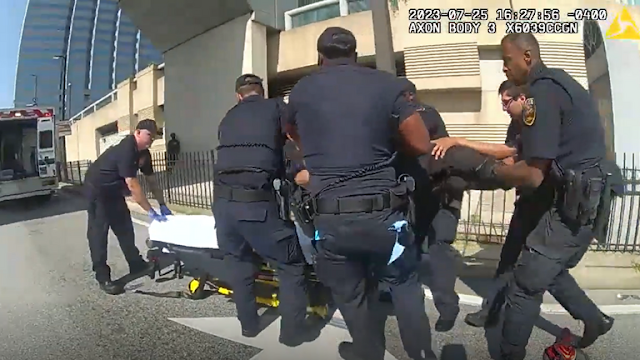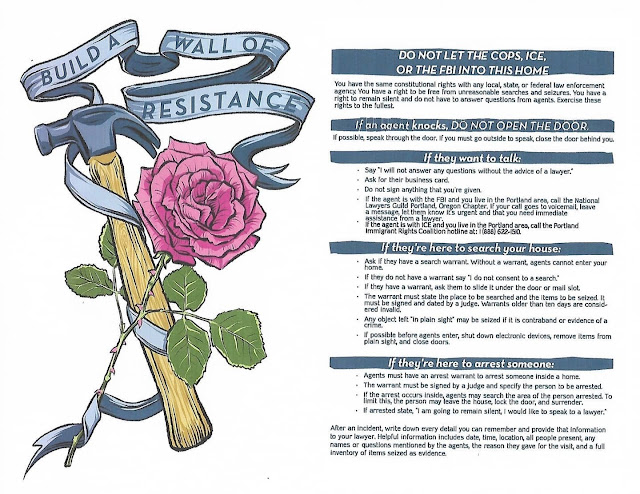Prone Restraint Cardiac Arrest
According to an August 30th 2023 report by EMS1 - "A Baltimore paramedic warned officers on the scene of a July police response that preceded a man’s death in custody not to restrain the 29-year-old in a stretcher with his face down, body camera footage released Tuesday shows."
Police and paramedics responded to the 200 block of South Howard Street, next to the Baltimore Convention Center, after a 911 caller reported a man was “lying in the middle of the street trying to kill himself and ‘fighting people.’ MTA Police and Baltimore Police officers placed the man, identified later as Trea Ellinger, 29, of Glen Burnie, in handcuffs and onto the stretcher on his side. The [police] officers and Baltimore Fire Department medics restrained him onto the stretcher, and he was in a prone position while being loaded into the ambulance, the Independent Investigations Division said... *the practice of restraining people facedown is banned by some agencies, including BPD, as it can lead to breathing difficulties and cardiac arrest*.
The full article is available here...
(https://www.ems1.com/patient-safety/articles/body-worn-camera-footage-shows-baltimore-medic-warning-about-positional-asphyxia-jMKCLwRwUtaPOfUE/)
While this happened in Baltimore, not in the PNW, it does highlight the dangers of placing a patient in restraints, especially when that patient is prone.
Street medics should never place a patient in any type of restraint nor assist police in doing so.
* Positional asphyxia, also known as postural asphyxia, is a form of asphyxia which occurs when someone's position prevents the person from breathing adequately. People may die from positional asphyxia accidentally, when the mouth and nose are blocked, or where the chest may be unable to fully expand.
A 1992 article in The American Journal of Forensic Medicine and Pathology and a 2000 article in The American Journal of Forensic Medicine and Pathology said that multiple cases have been associated with the hogtie or hobble prone restraint position.
The New York Police Department’s guidelines, explaining protocols for mitigating in-custody deaths, were published in a 1995 Department of Justice bulletin on "positional asphyxia." The NYPD recommended that, “[a]s soon as the subject is handcuffed, get him off his stomach. Turn him on his side or place him in a seated position." A 1996 FBI bulletin said that many law enforcement and health personnel were being taught to avoid restraining people face-down or to do so only for a very short period of time.
A 2002 review of the literature published in the British Journal of Forensic Practice said that restraining a person in a face-down position is likely to cause greater restriction of breathing than restraining a person face-up.
A 2008 article in Medicine, Science and the Law said that the way the subject is restrained can also increase the risk of death, for example kneeling or otherwise placing weight on the subject and particularly any type of restraint hold around the subject's neck. Research measuring the effect of restraint positions on lung function suggests that restraint which involves bending the restrained person or placing body weight on them has more effect on their breathing than face-down positioning alone. (https://en.wikipedia.org/wiki/Positional_asphyxia)
---
Deaths occurring among agitated or violent individuals subjected to physical restraint have been attributed to positional asphyxia. Restraint in the prone position has been shown to alter respiratory and cardiac physiology, although this is thought not to be to the degree that would cause asphyxia in a healthy, adult individual. This comprehensive review identifies and summarizes the current scientific literature on prone position and restraint, including experiments that assess physiology on individuals restrained in a prone position. Some of these experimental approaches have attempted to replicate situations in which prone restraint would be used. Overall, most findings revealed that individuals subjected to physical prone restraint experienced a decrease in ventilation and/or cardiac output (CO) in prone restraint. Metabolic acidosis is noted with increased physical activity, in restraint-associated cardiac arrest and simulated encounters. A decrease in ventilation and CO can significantly worsen acidosis and hemodynamics. Given these findings, deaths associated with prone physical restraint are not the direct result of asphyxia but are due to cardiac arrest secondary to metabolic acidosis compounded by inadequate ventilation and reduced CO. As such, the cause of death in these circumstances would be more aptly referred to as “prone restraint cardiac arrest” as opposed to “restraint asphyxia” or “positional asphyxia.”



Comments
Post a Comment